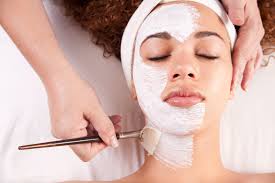Skin – it reflects what you eat !
Our Face – read skin, is the first visual we have to others. Scientifically, it performs various functions such as sensory, our first defensive layer against germs and the environment, and converting sunlight to vitamin D.
A question, which is very common asked to a dermatologist – when does it become crucial to start taking care of your skin? Answer to this is – It’s probably earlier than you think. The changes are sometimes so swift that by the time we see changes you don’t like in your skin, a lot of damage has already been done.
Therefore, it is very crucial to keep a close look at what skin is trying to reflect and if it may be signalling you of any problem inside your body.
One of the most important ingredient for a healthy glowing skin is hygiene and antioxidants. Hygiene, comes to washing, removal of dead skin regularly and hydrating. Antioxidants, keeping our skin protected from toxins, brings a healthy glow.
You’re worth it !
A glowing healthy skin is what everyone desires for but everybody has acquired a different skin type, which is very essential to be known, before you adopt any skin care regime. Skin types vary depending upon factors such as:
- Water content, which affects your skin’s comfort and elasticity
- Oil (lipid) content, which affects your skin’s softness
- Sensitivity level
Normal Skin Type: not too dry and not too oily. Combination Skin Type: can be dry or normal in some areas and oily in others, such as the T-zone (nose, forehead, and chin).
- Dry skin
- Oily skin
- Sensitive Skin
The Basics of Skin Care

Eating a healthy diet that includes some “smart” fats (omega-3s and monounsaturated fat),drinking plenty of water, staying hydrated. Good nutrition, getting enough sleep, reducing stress, Less or no consumption of alcohol, tobacco. It’s all about keeping the skin healthy from the inside & outside.
Food sources of monounsaturated fats include olive oil, canola oil, almond oil, hazelnut oil, avocados, olives, almonds, and hazelnuts.
What Nutrients can do?
Major antioxidants (vitamin A, C, and E) can help decrease the risk of sun and other environmental damage by reducing ageing “free radicals”
Sources: Top food sources of vitamin A include carrots, pumpkin, sweet potatoes, mangoes, spinach, cantaloupe, greens, kale, and tomato-vegetable juice.
Vitamin C include orange juice, grapefruit juice, papayas, strawberries, kiwis, red and green peppers, cantaloupes, tomato-vegetable juice, broccoli, mangoes, oranges, sprouts, cauliflower.
Vitamin E – More research is under way on the possible benefits of vitamin E as an ingredient in products that you rub on the skin, but for now it seems to benefit the skin most as a skin conditioner.
Food sources of vitamin E include vegetable oils, nuts, seeds, olives, spinach, and asparagus. But it’s difficult to get much of this vitamin from foods, so many people take a supplement. (Be sure to take no more than 400 international units per day so you don’t ingest too much.)
Eat Whole Foods – diet containing more “whole foods” — vegetables, fruits, legumes, eggs, yogurt, nuts, oils rich in monounsaturated fats, multigrain bread, tea, and water — had less wrinkling and premature skin aging than those whose diets were rich in whole milk, red meat (particularly processed meats), butter, potatoes, and sugar.
Skin is what you eat, so if you eat healthy, you would look healthy and a shining face with glowing skin is far more beautiful than a makeup !
Comments are closed.

